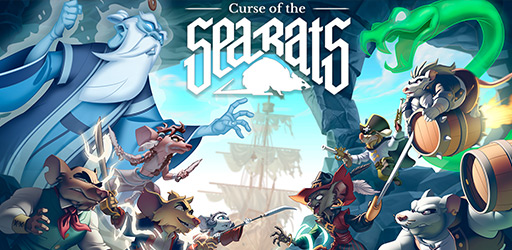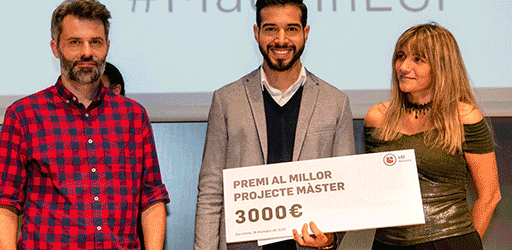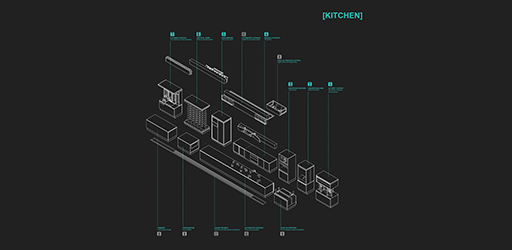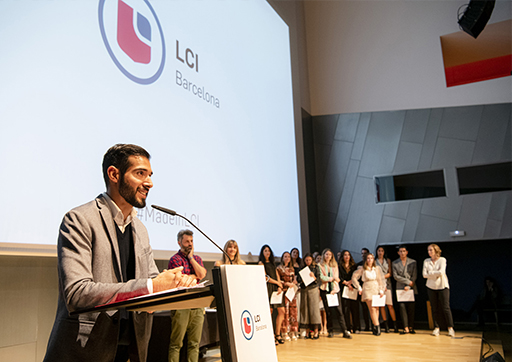
Spotlight on our alumni - Ian García | LCI Barcelona
With the onset of the pandemic, video games became a haven for many people, generating record numbers of gamers connected daily to the multiple platforms that exist today.
Mario Alberto Espinoza Membreño
Best Master’s Final Project 2018-2019
“SINERGIA - Advanced Gastronomy & Emerging Technologies in Catering Industry Spaces”
Official Master’s Degree in Experiential Interior Design - LCI Barcelona

1. Tell us about your project and its goals.
“SINERGIA” is a restaurant space than can adapt to alternative gastronomy, connected and augmented by technology, in which data and food, humans and machines, nature and technology are combined in a balanced system. The project develops the concept of a restaurant, a laboratory, a factory and a farm, to open up to humans and explore new sectors of knowledge and experience.
The research analyzes automation processes and emerging technologies, with an emphasis on technological advances in the gastronomic sector, denoting their current role and future in society, as well as the transformation of spaces and user experiences. Through an architectural design proposal, a restaurant space becomes a digital program in which machines/nature/users coexist autonomously and collaboratively to provide an experience through new gastronomy and advanced technology integrated into nature.
2. What were you inspired by? What were your references?
I was inspired to try to take on something relevant, like research. Since the project lasts for almost 12 months, I wanted to devote my time and efforts to a topic that I find interesting and that is important to address today in order to anticipate what lies ahead in the future.
The project analyzes human beings as the reproductive organ of technology, their ability to transform and adapt in new sectors such as gastronomy/catering and the new methods of food production that will provide a solution to the global crises that humanity will face in less than 50 years.
My main reference was the renowned futurist Gerd Leonhard, author of the book Technology vs Humanity. Through his reflections on the current and future applications of technology, I was able to lead the concept of design towards research that is well supported by scientific data and studies. In the end, it was just a matter of creating compatibility and a clear link between what I was researching and the way I was applying and translating it to my project.
3. What would you highlight about the entire creative process?
The biggest challenge after so many months of work was finding the most effective way to filter, categorize and communicate all the scientific information I had gathered in one document. And backing up and referencing all the data that supported the proposal. I would particularly emphasize the link between the scientific and the practical sides of the design concept that is reflected through the architectural proposal.
4. How has everything you learned during the master’s degree helped you to carry out “SINERGIA”?
The subjects taught during the master’s degree addressed different topics and content that allowed me to approach my research from a new perspective. I learned to understand spaces beyond the functional and the visual, to share my work with different professionals who work in the sector, and to implement precisely what they taught us. Through lectures and exercises, I was able to put into practice the skills that I wanted to develop, and subsequently direct my project.
5. What did you think of Dr. Carmelo Zappulla’s mentoring during the project?
Carmelo constantly monitored the link between research, concept and experience in space, always challenging us to design creative solutions. I would highlight his ability to make you think about the potential that each element of a space can have and how, together, they provide a spatial, functional and experiential solution.
6. Tell us about the final presentation of the project. What was your experience like?
As is usual with this type of project, the last few weeks and the days before delivery are exhausting. The clock is ticking and you are worried about the smallest detail; you want to show everything you have worked out in the best possible way.
When the day came for the final presentation of the project with the master’s degree jury and external guests, I did not feel nervous, but rather enthusiastic about being able to share the idea that I had been working on for so long. Time flies by and you want to explain everything, but you must demonstrate your ability to synthesize in order to be able to communicate the message and content in a direct and efficient way.
I received many positive comments that emphasized my effort and made me feel satisfied. The presentation caused debate among the jury and multiple points of view were shared. I can sum it up by saying that it was enjoyable as different ideas were shared.
7. How did you feel when you received the Best Master’s Final Project Award 2018-2019?
I was very pleased to have completed my studies with the best possible reward. Being recognized and awarded at the ceremony made me very happy. A happiness that I was able to share with my family, who travelled from the other side of the world to be with me for the event.

